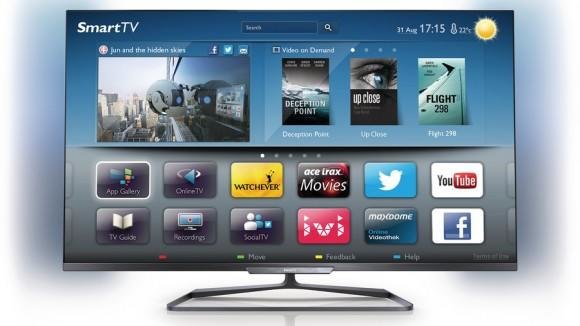Maestro Blog
The Ultimate Guide to TV SDK for Businesses in 2024
Subtitle
Traditional media like newspapers, magazines, radio shows, and television programs may be on the decline, but new digital channels like websites, blogs, podcasts, and streaming have risen up to take their place!
It’s important to understand that while demand for content is higher than ever, it’s primarily happening through digital media – and when it comes to video, over-the-top (OTT) streaming is now one of the most important ways to get video content in front of your ideal audience.
So, in this guide, we’ll explore what a TV SDK is and how you can use it to power your business’s OTT content delivery needs.
Table of Contents
- What is a TV SDK?
- 5 Common Components of an SDK
- Why Businesses Need a TV SDK
- Official TV SDKs
- OVP SDKs
- Using Both Types of SDKs
- Creating a Smart TV App with TV SDK
- Set a Project Goal
- Get Familiar with Each TV SDK
- Integrate SDK in Your App
- How to Choose the Right TV SDKs
- Work with Maestro
What is a TV SDK?

A television software development kit (TV SDK) is a collection of tools, libraries, and APIs that developers can use to create, customize, and deploy applications for smart TVs and streaming devices.
The TV SDK helps support app development for popular smart TV platforms and OTT streaming services, including Android TV, Apple TV, Amazon Fire TV, Roku, and Samsung Tizen. It provides both pre-built components like sample code, and in-depth documentation to help you build out a smart TV app from scratch or quickly customize a white-label solution.
We should also point out that there are a few different types of TV SDKs, including (1) official SDKs for each popular OTT platform where you want your app to be available, and (2) online video platform SDKs that will incorporate advanced video features and content management across multiple platforms.
5 Common Components of an SDK

A thorough software development kit usually includes several key components:
- Libraries and APIs - Libraries are pre-written code built to perform common tasks, and application programming interfaces (APIs) allow you to talk to and exchange information with other software or services. Both libraries and APIs speed up the process of implementing various features, because you don’t have to build them from scratch.
- Documentation - Detailed guides and explanations on using the SDK’s different features and tools. Think of these as the instruction manual not just for the libraries and tools found in an SDK, but step-by-step guidance on every aspect of developing for a particular platform.
- Tools - Some SDKs provide helpful tools for developing, debugging, and testing, including the integrated development environment (IDE). They may also feature compilers or other build tools for packaging the application.
- Sample code - Sample code snippets and example projects can serve as a real-world demonstration on how to implement features from within the SDK. As opposed to libraries, code snippets aren’t usually used as-is.
- Community support - Community discussions, forums, technical support, and other troubleshooting and knowledge sharing opportunities for a specific SDK or platform.
Why Businesses Need a TV SDK

If you want to develop a successful OTT app that can deliver quality video content across all of the streaming platforms where your viewers are watching, then you should ideally work with both official SDKs and OVP SDKs.
Here are the benefits of each SDK type:
Official Platform SDKs
When it comes to official platform SDKs – such as the Fire TV Integration SDK or the tvOS SDK – you’re getting access to all of the necessary tools and libraries to make sure your app is optimized for each of these unique environments.
These official SDKs allow for platform-specific integrations, as well as UI/UX standards and device controls, so that your app feels native to their platform. They also ensure that you’re in compliance with their OS and app store.
Online Video Platform SDKs
With online video platform SDKs like Maestro’s, you can get a lot of other invaluable tools that may not be part of the official platform SDKs.
Think of it as a convenient way to add to your app’s functionality, with features like video encoding/decoding, digital rights management, adaptive streaming, analytics, and monetization that are included with an online video platform.
Using Both Types of SDKs
It’s not only possible, but encouraged for your team to work with both types of TV SDKs during the development process.
When you use both, you can develop an app that integrates with each device or platform’s native features, while also ensuring quality video playback and a host of other useful features related to interactivity, monetization, and analytics.
In the end, you can have a customized, branded app that gives you direct reach to your target audience across all of the most important OTT platforms.
Creating a Smart TV App with TV SDK

Now that we’ve looked at what a TV SDK is and how it can help you develop OTT apps for popular streaming platforms and devices, let’s talk about the typical steps you’ll take to get started with an SDK.
1) Set a Project Goal
The first step with any project is to fully scope out what you’re trying to accomplish with a smart TV app. There’s a big difference between a simple white-label app on one platform versus a robust, fully-featured multi-platform app developed from scratch.
Development resources can be significant, so it’s important to set a project goal that’s aligned with your business needs. Ask yourself questions like:
- Who is our target audience? Which devices or platforms do they use?
- What type of content will we deliver? Is it on-demand or live stream?
- How often will we update our content library or distribute new videos?
- Which platforms and devices should we support (such as Roku, Apple TV, Android TV, and Amazon Fire TV)?
- What are our in-house resources and capabilities? Do we have the budget and talent to develop and maintain the app?
- What is the ideal timeline for launching the app?
- Can we use an SDK to speed up development? Which SDK(s) will we work with?
With answers to some of these important questions, you can set a project goal and start planning how you’ll actually tackle the development of your new OTT app.
2) Get Familiar with Each TV SDK
Once you know what you’re trying to build, you can determine how to use all of the resources at your disposal to make it happen.
As we mentioned before, you’ll almost certainly want to at least skim the official SDK from each platform your app will appear on, and also get accustomed to the SDK associated with your online video platform of choice.
For example, Maestro has a TV SDK to help you with each platform you’re developing for. To find out more, you can reach out to us below.
→ Contact us to learn more about Maestro's TV SDK
3) Integrate SDK in Your App
Now, it’s time to use the SDK(s) to integrate its features into your smart TV application. If you’re building it with any in-house resources, your developers should have a development environment established that can work with the SDK.
Keep an eye out for sample code and libraries in the SDK documentation that will help guide your team in deploying the SDK integration. Remember, you’ll probably have your app interacting with your OVP’s SDK for general development, while turning to each official platform SDK as you develop your app to work natively on each platform.
Eventually, you’ll be ready to test and optimize your app across platforms. Like with most software, your app probably isn’t a one-and-done project, but something you’ll continue to support and improve over time.
How to Choose the Right TV SDKs

To efficiently develop an OTT app that’s fully-featured and multi-platform, you’re going to need some serious planning and resources. The good news is, TV SDKs used the right way will significantly shrink that required time and effort.
We recommend working with an online video platform like Maestro to host and manage your video content for VOD and streaming. An OVP also has important features related to interactivity, analytics, and monetization that will help you deploy polls and Q&As, monitor key metrics, and deploy monetization options ranging from ads to subscriptions.
With the right OVP in your corner, you can work with their team and TV SDK to develop your own branded OTT app – either from scratch or white-label. Ultimately, an OVP with a quality SDK can serve as an instrumental partner in getting your app distributed everywhere you need it to be!
Work With Maestro

Maestro is a popular online video platform for enterprises, featuring advanced monetization options, in-depth analytics, robust security features, and interactive tools.
Now, we’re pleased to announce that we’ve opened up a whole new opportunity for reaching your customers through the use of OTT TV and smart TV apps. To help you take full advantage of OTT as a distribution channel, we’re releasing a new suite of TV SDKs.
Are you ready to reach your customers over OTT with Maestro? Give your video content a wider reach and a better viewer experience. Contact us now to find out more and get your content out there via OTT!
→ Contact us to get started


 By
By